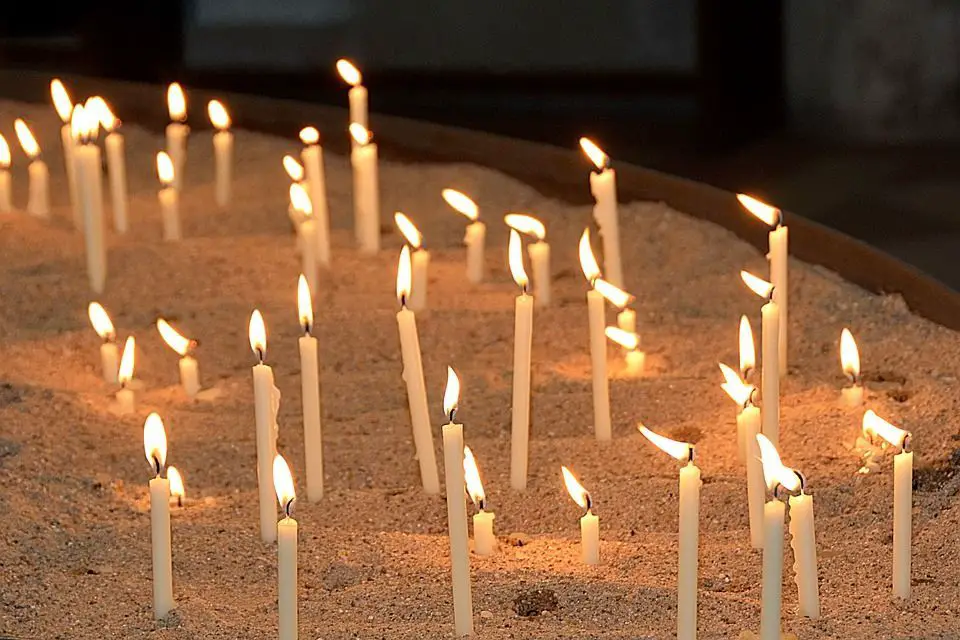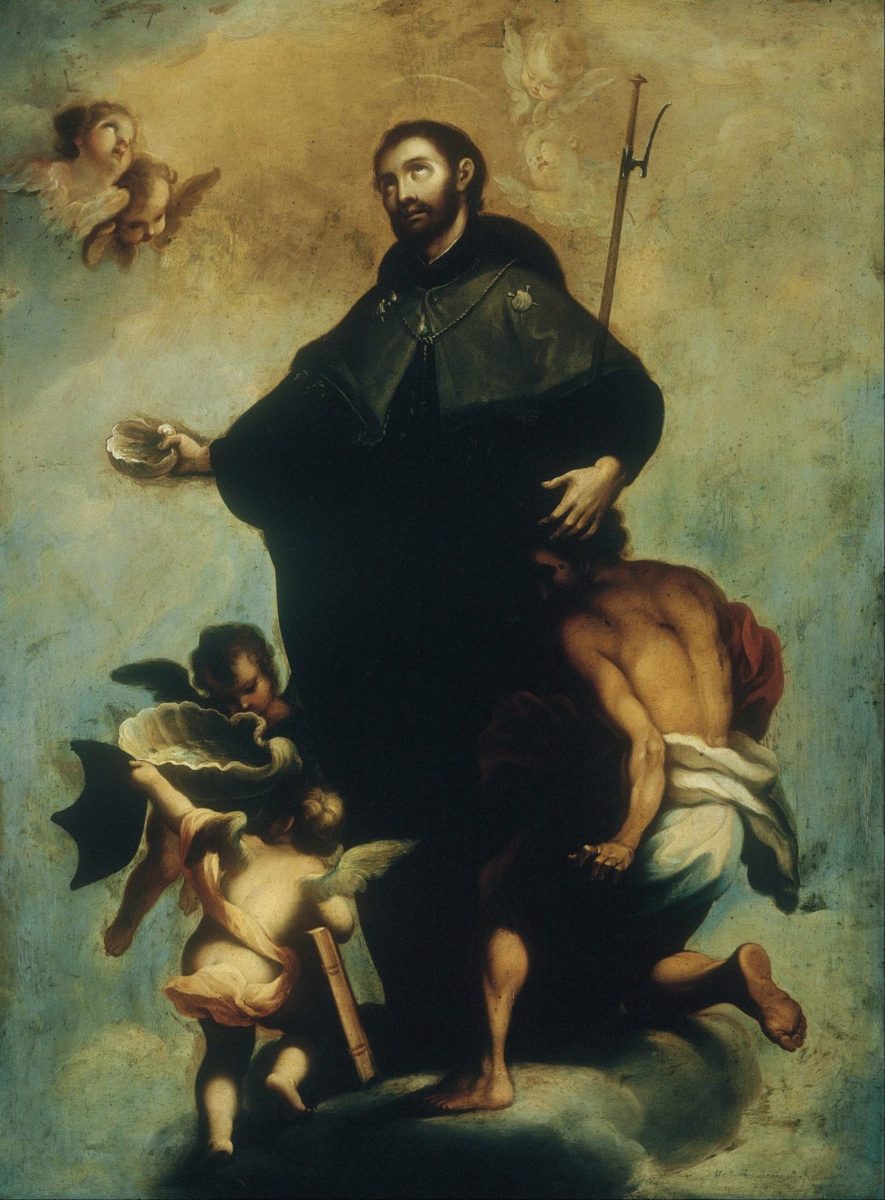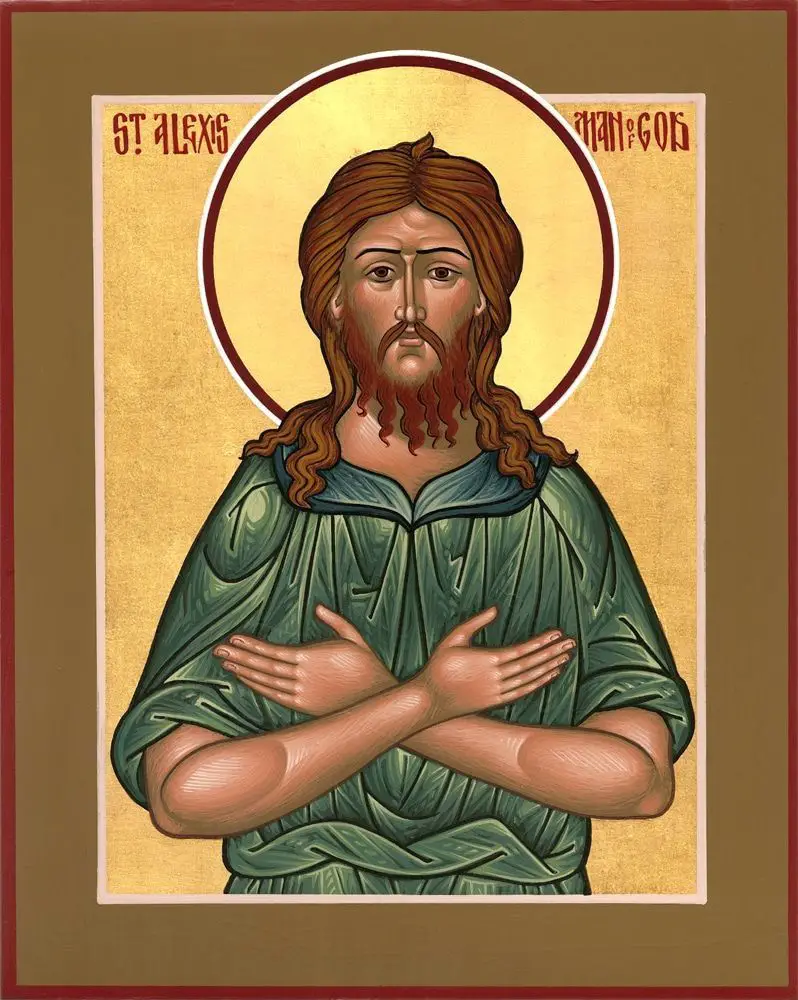St Francis Xavier was a Roman missionary who established Christianity in India and Japan. He took his vows in Paris as one of the first members of the Society of Jesus.
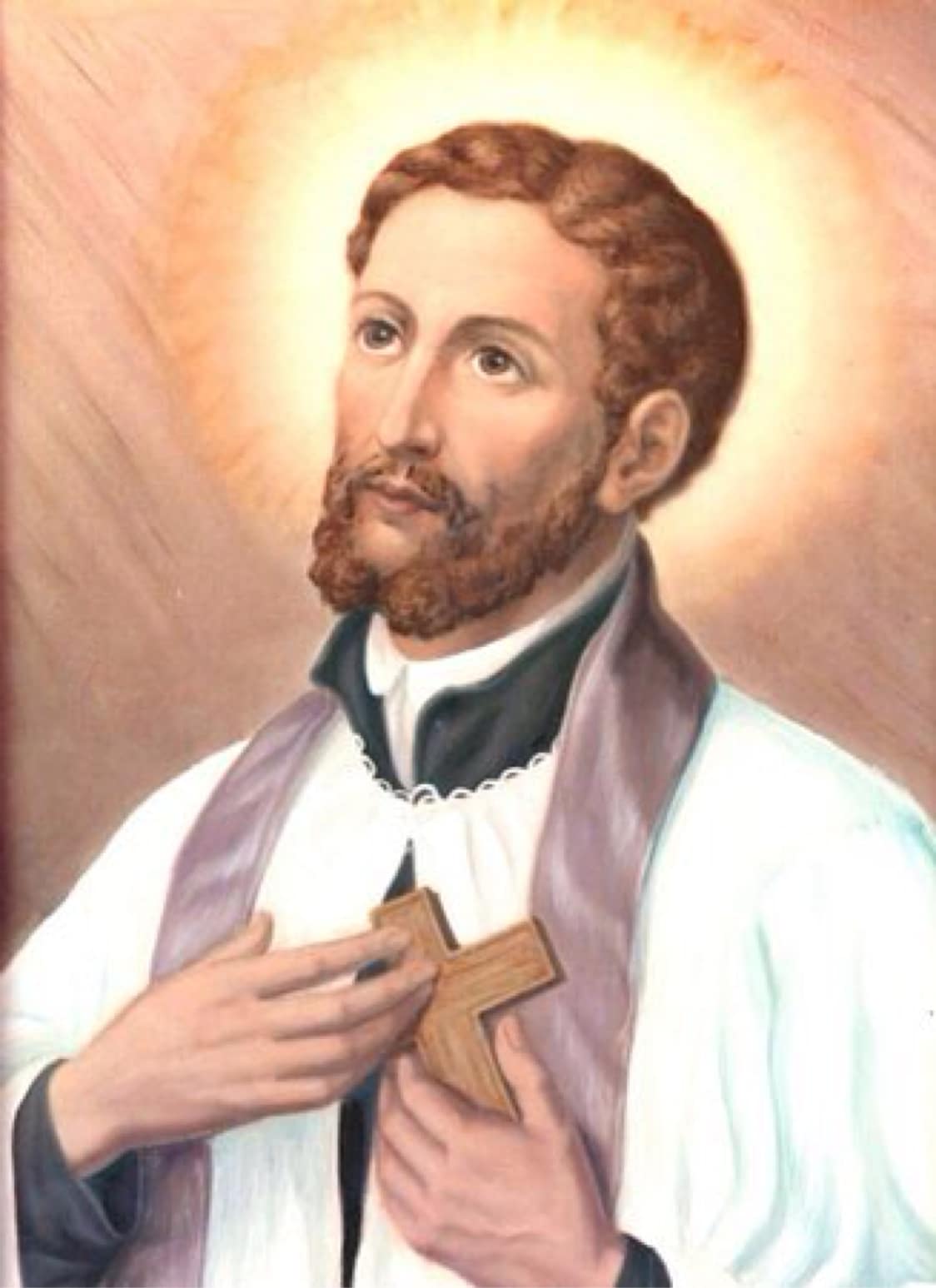
Biography of Saint Francis Xavier
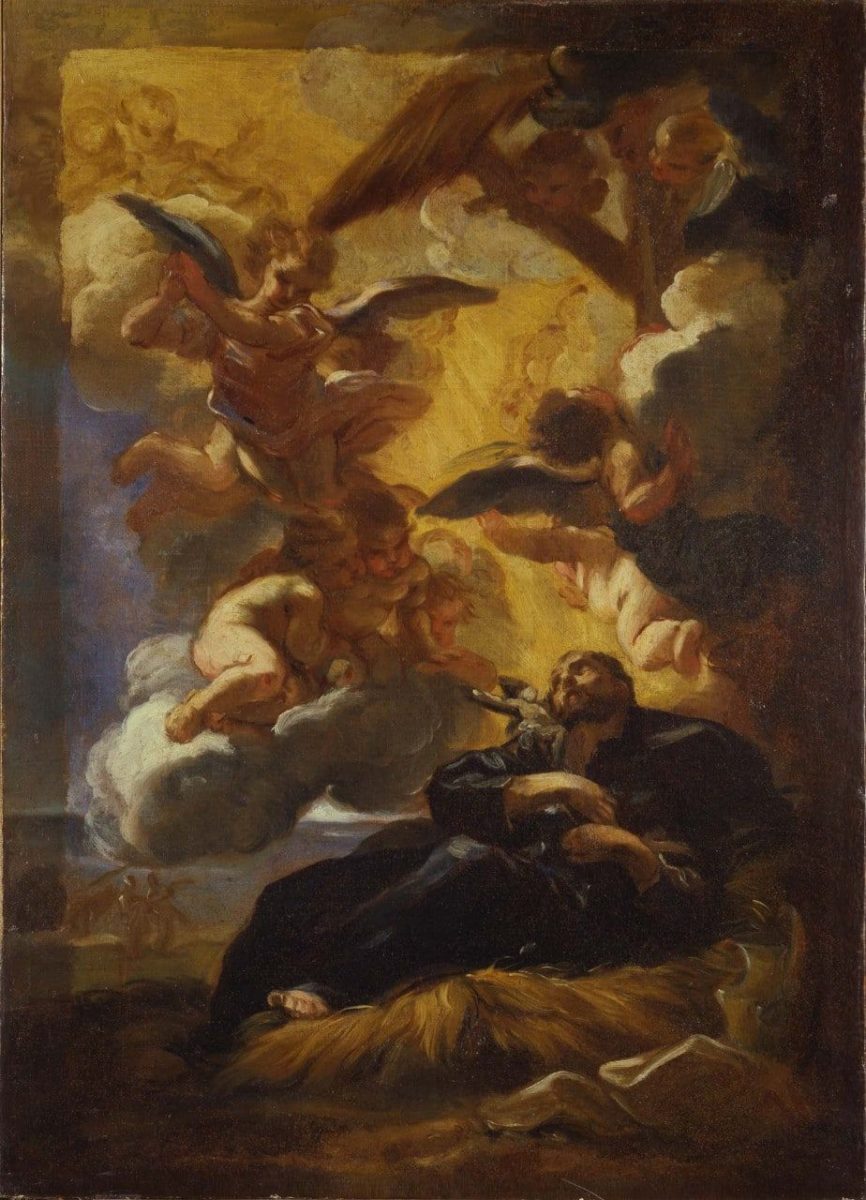
Francis was born in Navarre (now in northern Spain), in the castle of Xavier, where Basque was the native language. He was the third son of the President of the Council of the King of Navarre, most of which was soon to fall into the hands of the Crown of Castile.
His family was a wealthy peasant family, and his father had a doctorate in law from the University of Bologna, and later became privy counsellor and finance minister to King John III of Navarre (Jean d’Albret).
Francisco’s mother was Doña María de Azpilcueta y Aznárez, the only heiress of two noble Navarrese families and thus related to the great theologian and philosopher Martín de Azpilcueta. In 1315, Francisco’s father died when he was only nine years old.
In 1516 Francisco’s brothers took part in a failed Navarrese-French attempt to drive the Spanish invaders out of the kingdom. The Spanish governor, Cardinal Cisneros, confiscated the family lands, demolished the outer wall, gates and two towers of the family castle and filled in the moat.
Learn more about the biography of St Francis Xavier in this video Below is his story in cartoon, sure to please the little ones, it is a good way to teach religion.
The height of the keep was also reduced by half. Only the family residence remained inside the castle. In 1522, one of Francis’s brothers joined 200 Navarrese nobles in a tenacious but unsuccessful resistance against the Castilian Count of Miranda in Amaiur, Baztan, the last Navarrese territory south of the Pyrenees.
Saint Francis Xavier grew up in Xavier and received his early education there, as was often the case with the younger sons of the nobility, he was destined for an ecclesiastical career, in 1525 he travelled to the University of Paris, the theological centre of Europe, to begin his ecclesiastical studies, a curious fact that Saint Francis of Assisi was also born into a noble family.
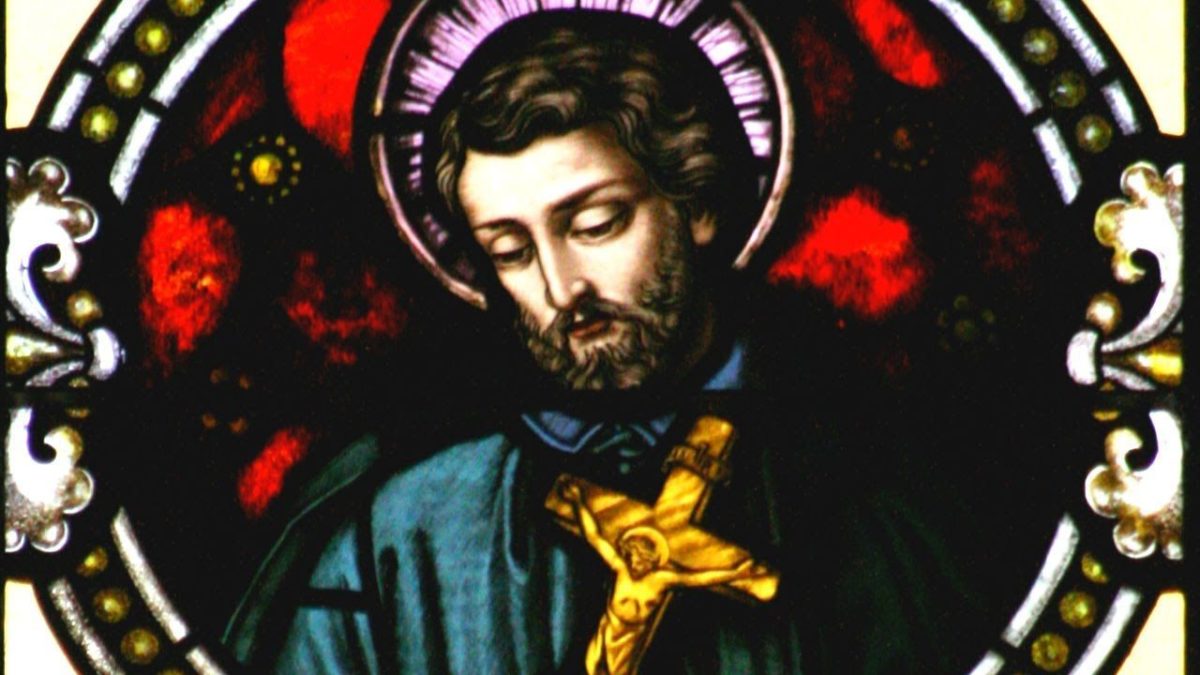
He spent the next eleven years in Paris, during which time he gained a reputation as an athlete and an excellent high jumper. In 1529, Francis shared accommodation with his friend Pierre Favre and a new student called Ignatius of Loyola. Ignatius was 38 years old and much older than Pierre and Francis, who were 23 at the time. Pierre was persuaded by Ignatius to become a priest, but Francis had aspirations of worldly advancement. At first Francis was not very enthusiastic about Ignatius.
He thought the new companion was a joke and was sarcastic about his efforts to convert students. It was only when Pierre left his lodgings to visit his family, leaving Francis alone with Ignatius, that Ignatius was able to slowly break through Francis’ stubborn resistance. In 1530 Francis was awarded the degree of Master of Arts and went on to teach Aristotelian philosophy at the Beauvais College of the University of Paris.
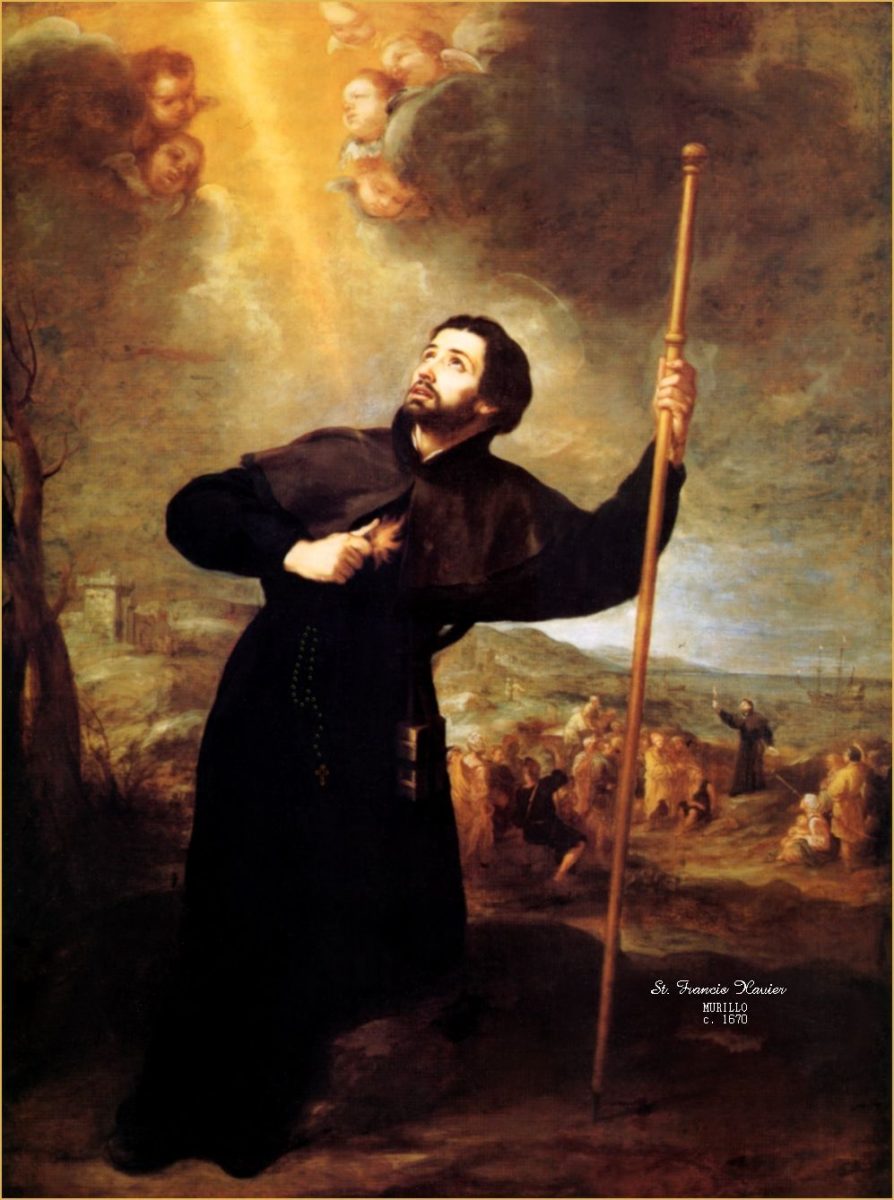
On 15 August 1534, seven students met in a crypt under the church of Saint Denis (now Saint Pierre de Montmartre) in Montmartre, on the outskirts of Paris. They were Francis Xavier, Ignatius of Loyola, Alfonso Salmerón, Diego Laínez, Nicolás Bobadilla from Spain, Peter Faber de Savoy and Simão Rodríguez from Portugal. They took private vows of poverty, chastity and obedience to the Pope and also promised to go to the Holy Land to convert the unbelievers – this was the group of seven.
Mission in India

When all the members of the Group of Seven had completed their studies, they were reunited in Venice, where Francis Xavier was ordained a priest on 24 June 1537.
Having spent more than a year trying in vain to find passage to the Holy Land, the seven went to Rome with new recruits to place themselves at the disposal of the Pope.
In the meantime, their preaching and nursing of the sick throughout central Italy had made them so popular that many Catholic princes sought their services.
One of these was King John III of Portugal, who wanted hardworking priests to minister to the Christians and evangelise the people of his new Asian dominions. When illness prevented one of the two originally chosen for the task from going, Ignatius appointed St Francis Xavier as his replacement.
The next day, 15 March 1540, Francis left Rome for India, travelling first to Lisbon, one of his desires being to preach Christianity outside Rome, and with this journey he had achieved part of his aim, but in reality he wanted to evangelise China.
The following autumn, Pope Paul III formally recognised Ignatius’ followers as a religious order, the Society of Jesus. St Francis Xavier landed in Goa, the centre of Portuguese activity in the East, on 6 May 1542; his companion had stayed behind to work in Lisbon. He spent much of the next three years on the south-east coast of India among the simple, poor pearl fishermen, the Paravas.
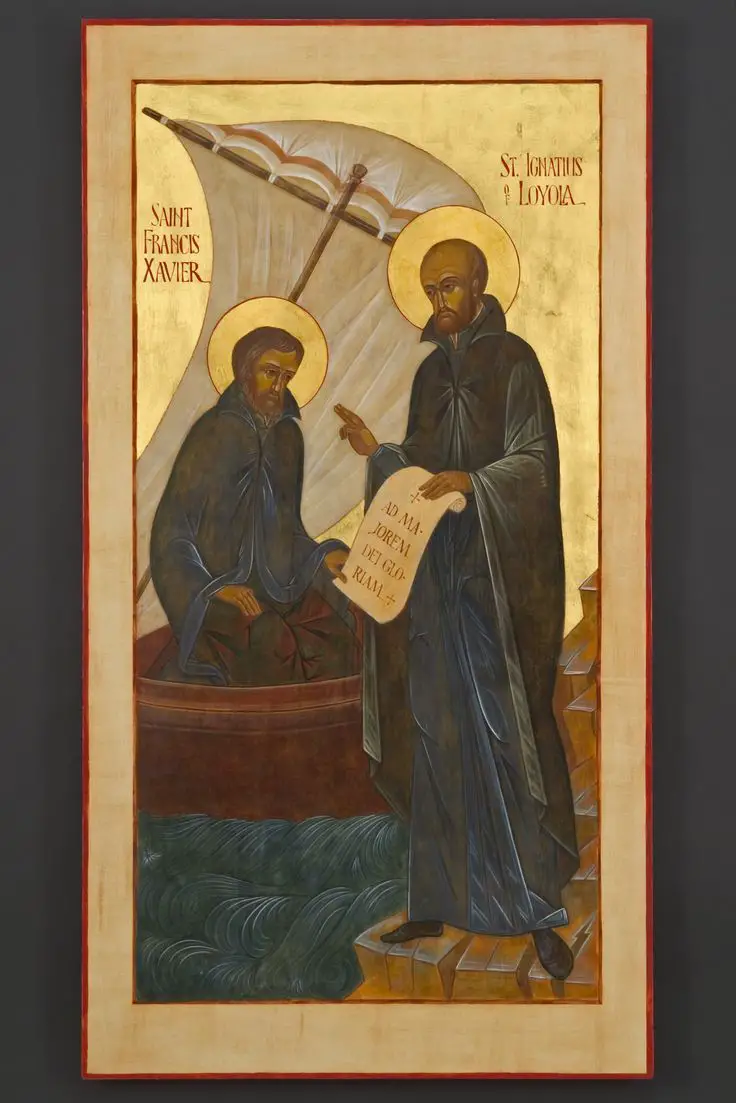
Some 20,000 of them had been baptised seven years earlier, mainly to secure Portuguese support against their enemies, but had since been neglected. With the help of interpreters and a small catechism translated into his native Tamil, Francis travelled tirelessly from village to village, teaching and reaffirming their faith.
His obvious kindness and the strength of his conviction overcame the difficulties of verbal communication. Soon the primitive Macuans of the south-west coast expressed their desire for baptism and, after brief instruction, St Francis Xavier baptised ten thousand of them in the last months of 1544.
Years in Japan
The life of St Francis has a wide historical context due to his travels and the large number of people he converted to Christianity. Here is a video with more information about the life of this wonderful saint.
After his mission in India, which had been very fruitful, Xavier’s eyes were turned to a country that Europeans had only reached five years earlier: Japan. His conversations in Malacca with Anjiro, a Japanese deeply interested in Christianity, had shown him that these people were cultured and sophisticated, unlike the fishermen he had met in India or the headhunters of the Moluccas.
On 15 August 1549, a Portuguese ship carrying Francisco, the newly baptised Anjiro and several companions entered the Japanese port of Kagoshima. Xavier’s first letter from Japan, which would be printed more than 30 times before the end of the century, reveals his enthusiasm for the Japanese, the best people yet discovered in this century.
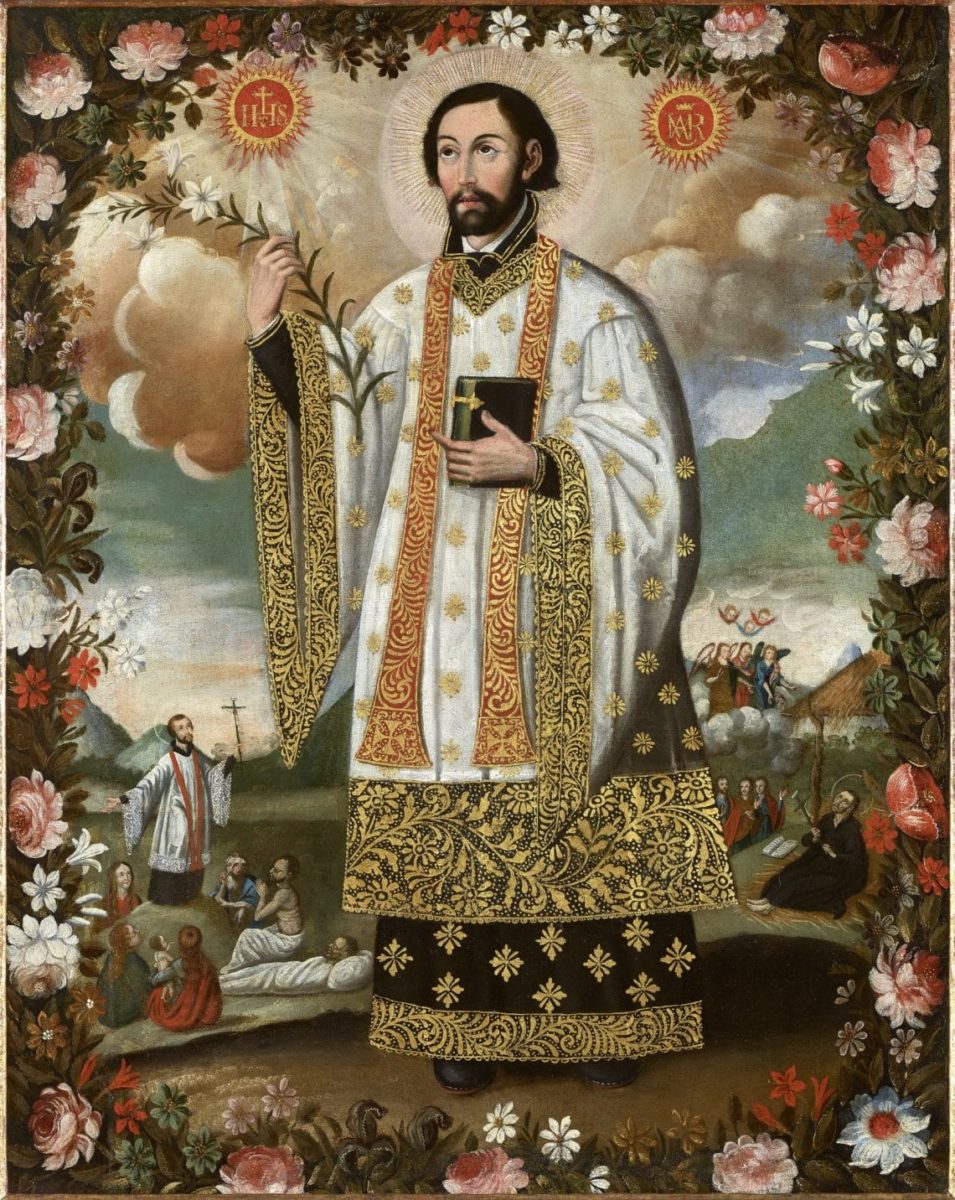
He became aware of the need to adapt his methods. His poverty, which had won over the Paravans and Malays, often repelled the Japanese, so he abandoned it for study on the screen when necessary. At the end of 1551, having received no mail since his arrival in Japan, Francis decided to return temporarily to India, leaving about 2,000 Christians in five communities in the care of his companions.
Back in India, he had to deal with administrative matters as superior of the newly created Province of the Jesuits of the Indies. By now he had realised that the road to the conversion of Japan lay through China; it was from the Chinese that the Japanese sought wisdom.
But he never reached China. On 3 December 1552, Francis died of fever on the island of Sancian (now Shang-ch’uan Tao, off the coast of China) while trying to gain entry to the country, which was then closed to foreigners.
After his death

He was first buried on a beach on Shangchuan Island, Taishan, Guangdong. His incorruptible body was removed from the island in February 1553 and temporarily buried in St Paul’s Church in Portuguese Malacca on 22 March 1553. An open tomb in the church now marks the burial place of St Francis Xavier. Another saint with a body with this characteristic is St Catherine.
The body of St Francis Xavier was later removed and sent to Goa on 11 December 1553. His body is now in the Basilica of Bom Jesus in Goa, where it was placed in a closed glass jar in a silver coffin on 2 December 1637. Learn more about the incorruptible bodies of some saints in this video, a very interesting video that you will surely enjoy watching.
This casket, built by Goan silversmiths between 1636 and 1637, was an exemplary blend of Italian and Indian aesthetic sensibilities. There are 32 silver plaques on the four sides of the casket depicting different episodes in the life of the saint. The right forearm, which Xavier used to bless and baptise his converts, was detached by the Superior General Claudio Acquaviva in 1614. Since then it has been displayed in a silver reliquary in Rome’s main Jesuit church, Il Gesù.
Another of Xavier’s arm bones was taken to Macao, where it was kept in a silver reliquary. The relic was destined for Japan, but religious persecution persuaded the church to keep it in Macau’s St Paul’s Cathedral. It was later moved to St Joseph’s and in 1978 to the Chapel of St Francis Xavier on the island of Coloane. More recently, the relic was moved to St. Joseph’s Church.

In 2006, on the 500th anniversary of his birth, the Xavier Tomb Monument and Chapel on Shangchuan Island, which had fallen into disrepair after years of neglect under China’s Communist regime, was restored with the help of alumni from Wah Yan College, a Jesuit college in Hong Kong.
Beatification of St Francis Xavier

Francis Xavier was beatified by Paul V on 25 October 1619 and canonised by Gregory XV on 12 March 1622, at the same time as Ignatius of Loyola, whom Pius XI proclaimed the patron of Catholic missions.
His feast day is 3 December. St Francis Xavier is the patron saint of his native Navarre, which celebrates his feast day on 3 December as a public holiday.
The relics of Saint Francis Xavier are kept in a silver casket, elevated in the Basilica of Bom Jesus, and are normally exposed (brought to the ground) every ten years, but this is at the discretion of the saint.
The relics were exhibited from 22 November 2014 at the XVII Solemn Exposition. The exhibition ended on 4 January 2015. The previous exhibition, the sixteenth, was held from 21 November 2004 to 2 January 2005. The relics of St Francis Xavier are also housed in the Church of Espírito Santo,
Also in Margão, at Sanv Fransiku Xavierachi Igorz (St Francis Xavier Church), Batpal, Canacona, Goa and at St Francis Xavier Chapel, Portais, Panjim. Other pilgrimage centres include St Francis Xavier’s birthplace in Navarre, Il Gesu Church, Rome, Malacca (where he was buried for 2 years before being taken to Goa), Sanciano (place of death), etc.
St. Francis Xavier is known as a saint who left his mark, sometimes he is compared to St. Peter because of the number of people he brought to Catholicism and he took care of several churches located in India and Japan, which were very difficult places to evangelise and stay in, he died in the Asian continent going to China which was another place he wanted to preach.
St Francis Xavier is a saint venerated in Sonora and the neighbouring state of Arizona. In Magdalena de Kino, Sonora, Mexico, in the church of Santa Maria Magdalena, there is a reclining statue of St Francis Xavier that was brought by the pioneering Jesuit missionary Father Eusebio Kino in the early 18th century.
The statue is said to be miraculous and is a place of pilgrimage for many in the region. The Mission of San Xavier del Bac is also a place of pilgrimage. The mission is an active parish church serving the people of the San Xavier District, the Tohono O’odham Nation and nearby Tucson, Arizona.

The legacy of St Francis Xavier
St Francis Xavier is famous for his missionary work, both as an organiser and as a pioneer, known for having converted more people than any other since St Paul the Apostle. See below one of the works done in his name, it is his former school where he began his education, which has now been converted into a church.
Pope Benedict XVI (See: Where Pope Joseph Ratzinger Lives Since His Resignation) said that both Ignatius of Loyola and Francis Xavier, not only had their histories intertwined over many years from Paris and Rome, but they also had a unique desire, a single passion, the passion to give God ever greater glory and to work for Him.
St Francis Xavier developed a Jesuit method of mission. His success encouraged many Europeans to join the order, as well as hundreds of missionaries around the world. Many churches around the world, often founded by Jesuits, are named after St Francis Xavier.
In the United States, these include the historic shrine of St Francis Xavier in Warwick, Maryland (founded in 1720 and where American founding father Charles Carroll of Carrollton was born). Another saint with very important churches is St Cajetan in London, where he is most venerated and where a railway station is named after him.

Rubens painted St Francis Xavier Raising the Dead for a Jesuit church in Antwerp, depicting one of the many miracles of St Francis (in this case a resurrection). The Charles Bridge in Prague, Czech Republic, has a statue of St Francis Xavier, and St Anthony of Padua also has a large number of statues, but in Italy.
As the patron saint of Navarre and one of the most important Jesuit saints, he is highly venerated in Spain and Spanish-speaking countries, where Francis Xavier or Javier are popular male names for boys. The alternative spelling Xavier is also popular in Portugal, Catalonia, Brazil, France, Belgium and southern Italy. In India, the spelling Xavier is popular and the name is quite common among Christians, especially in Goa and the southern states of Tamil Nadu, Kerala and Karnataka.
The names Francisco Xavier, Antonio Xavier, João Xavier, Cayetano Xavier, Domingos Xavier and so on were very common in Goa until recently.
Prayer of Saint Francis Xavier
Saint Francis has a great variety of prayers for different reasons, to pray to this saint you just have to do it with faith and calm. If you want a different type of prayer, the prayer to Saint Benedict is very powerful.
There are also a number of other saints who are also very miraculous and you can turn to them when you need help, for example St Elizabeth.
Conversion of the unbelievers
O eternal God, Creator of all things, remember the unfaithful human beings whom You have created in Your own image and likeness. Lord, see how hell is filling up with these souls to Your shame. Remember that Your Son Jesus suffered the most cruel death for their salvation.
Lord, let Your Son no longer be despised by these unbelievers, but appeased by the prayers of Your saints and the Church, the Spouse of Your Most Holy Son. Remember Your mercy and blot out their idolatries and infidelities. May these nations no longer be ignorant of Him who is our salvation, our life and our resurrection, through whom we have been saved and delivered. To Him be glory forever and ever. Amen.
Nowadays there are a lot of prayers for different moments of our life, for love, money, prosperity or just to give thanks, so I leave you with a video with another prayer to St Francis Xavier.
https://www.youtube.com/watch?v=yI6_D3krBLA
Prayer of St Francis Xavier
Not in the hope of gaining anything, not he who seeks a reward, but as Thou Thyself hast loved me, O ever-loving Lord. This is how I love you, I will live and sing your praises; I adore you because you are my God and my eternal King.

Prayers are sometimes said just to give thanks, and the one above is for that purpose, but if you want some miraculous help, you can choose the miraculous prayer to St Helena
Lord, make me an instrument of your peace. Where there is hatred, let me sow love; where there is sorrow, forgiveness; where there is doubt, faith; where there is despair, hope; where there is darkness, light; where there is sadness, joy.
O Great Master Teacher, please help me not to seek favour so much as to give favour; I do not want people to understand me, I only want to understand others, help me Father. Amen.
Another prayer that you may like is the prayer to St Jude Thaddeus for Love
Thou art my God, the only object of my love; not for the hope of endless joys above, nor for the fear of endless sorrows below, that those who love Thee should not suffer. For me, and as for me, you have condescended to bear an ignominious cross, the nails, the spear: A crown of thorns pierces thy holy brow, while bloody sweat flows from every limb. Follow your breath to me in torment, nail me to the cross, resolve me by your death.
And if these sufferings can move my heart, what more than you can my love deserve now? As then was and is Your love for me, so is and will be my love for You, for You, Saviour, the holy source of mercy! My God, my Father, my Creator and my King!
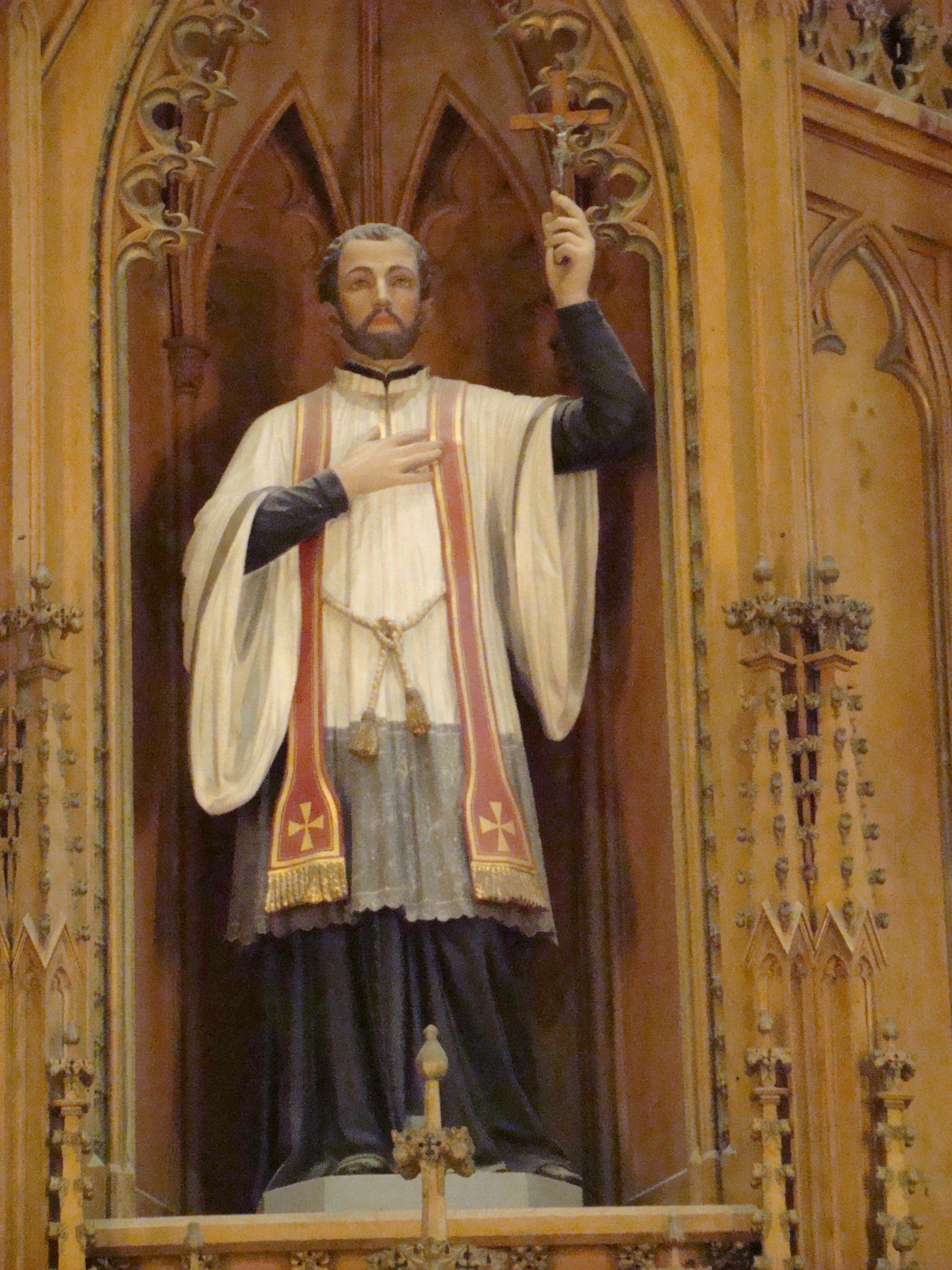
Novena to Saint Francis Xavier
Saint Francis Xavier also has a novena, this like any of them is done for a period of nine consecutive days, you must do it with faith, good attitude, if you want another option you can pray the novena to San Roque.
The Novena of Grace is a popular devotion to Francis Xavier, usually prayed during the nine days before 3 December or from 4 to 12 March (the anniversary of Xavier’s canonisation by Pope Gregory XV in 1622).
It began with the Italian Jesuit missionary Marcello Mastrilli. Before travelling to the Far East, Mastrilli was seriously injured in a freak accident after a celebration of the Immaculate Conception in Naples.
Delirious and on the verge of death, Mastrilli saw Xavier, who later told him that he had asked him to choose between travelling or dying, holding the respective symbols, to which Mastrilli replied: “I choose what God wants”.
After regaining his health, Mastrilli made his way through Goa and the Philippines to Satsuma, Japan. The Tokugawa Shogunate beheaded the missionary in October 1637, after three days of torture related to the volcanic sulphurous fumes of Mount Unzen, known as the “Mouth of Hell” or “Pit”, which the missionary had allegedly caused before renouncing his faith.
O great Saint Francis, beloved and full of charity, with you I worship the divine Majesty; and rejoicing

especially for the singular gifts of grace which have been bestowed upon you in life and in glory after death.
I rejoice especially for the singular gifts of grace which have been bestowed upon you in life and in glory after death.
I thank God and I beseech You with all the affections of my heart that through Your powerful intercession You may obtain for me above all the grace to live a holy life and die a holy death. Furthermore, I ask you to obtain for me (here I insert a special spiritual or temporal favour).
In asking for this favour, I am completely resigned to the divine will. I pray and desire only to obtain what is most conducive to the greater glory of God and the greater good of my soul. Pray for us, St Francis Xavier. May we be worthy of Christ’s promises.
O God, who by the preaching and miracles of St. Francis Xavier was able to unite the nations of the Indies to Thy Church, grant, we beseech Thee, that we, who venerate his glorious merits, may also imitate his example, through Jesus Christ our Lord. Amen.
(Then add an Our Father and a Hail Mary, three times, in memory of St Francis Xavier’s devotion to the Most Holy Trinity, and the Glory Be to the Father, ten times, in thanksgiving for the graces he received during his ten years of apostolate).
